Where Taiwan Meets the World:
Maritime Encounters of the Past
Cathy Teng / photos by Lin Min-hsuan / tr. by Brandon Yen
June 2024

The Tai-Mar is a gift from the Republic of the Marshall Islands, with which Taiwan has formal diplomatic ties. The vessel is on display at the National Museum of Prehistory, where it bears witness to the friendship between the two countries and celebrates Taiwan’s historical relationship with the Pacific islands.
Across the millennia, Taiwan has successively presented different aspects of itself to the world.
If microchips have become representative of our islands only in recent years, the 20th century already witnessed the global reach of products made in Taiwan. Scholars investigating the spread of Austronesian cultures across the Pacific Ocean have surmised that these peoples originated in Taiwan. It has also emerged that in prehistoric times, jades from Taiwan were part of a dynamic exchange with Southeast Asia.
Situated in Taitung City, the National Museum of Prehistory tells precisely this story of Taiwan’s symbiotic relationship with the wider world since time immemorial.
The National Museum of Prehistory (NMP) owes its existence to the construction of the South-Link Railway Line. In the 1980s, the site of Taitung’s new railway station yielded a large number of prehistoric slate coffins. These epochal finds led to the designation of the Beinan archeological site. Eventually, the NMP opened there in 2002.
In 2020 the NMP went into a long period of architectural renovation. Reopening its doors in May 2023, the museum now has “Where Taiwan Meets the World” as its slogan and continues to trace the island’s intimate ties with the world at large.
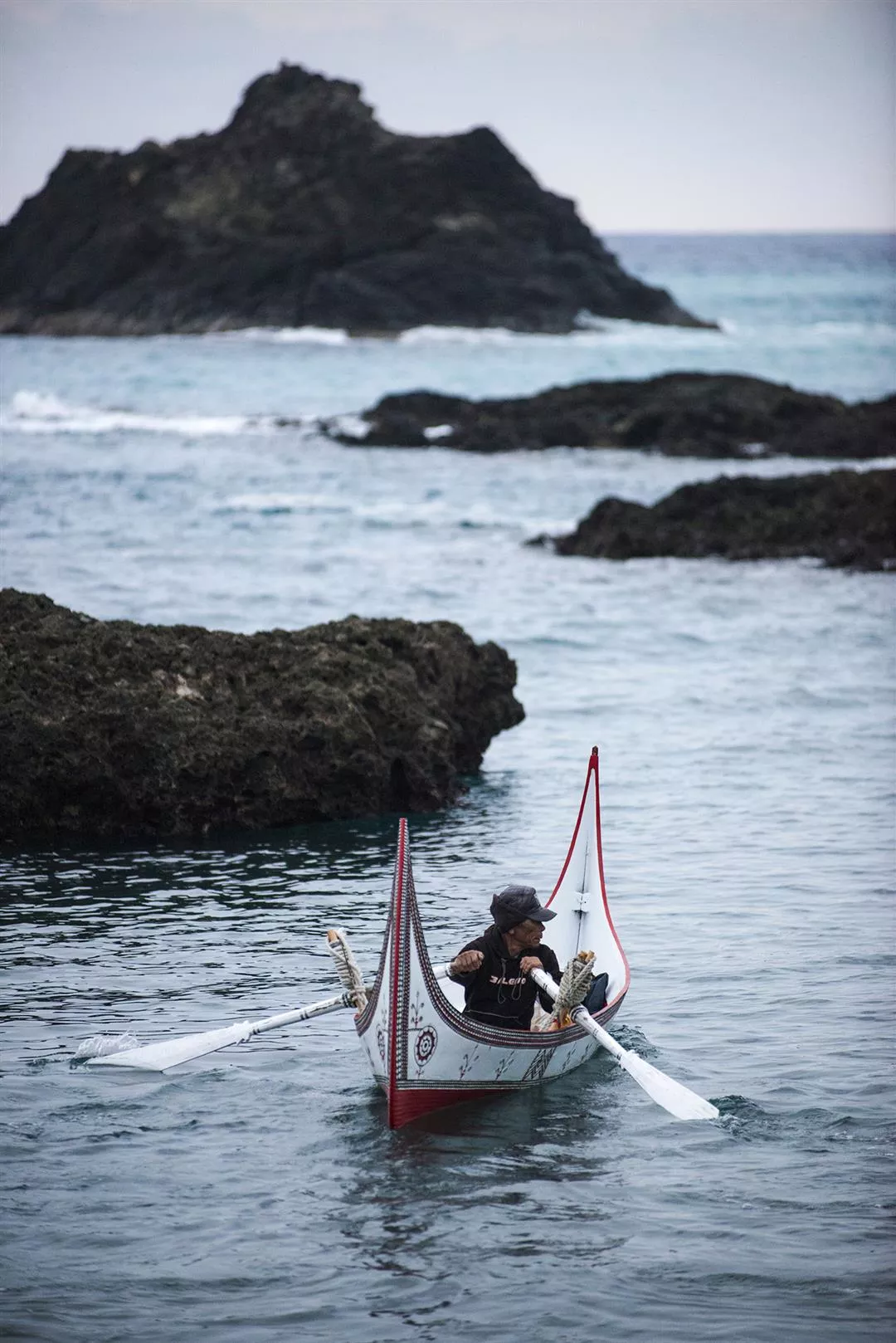
The Austronesian peoples were skilled seafarers. Far from representing an insurmountable obstacle, the sea made it possible for them to travel between islands. (photo by Kent Chuang)
Seafaring
Fang Chun-wei, head of the NMP’s Exhibition and Education Division, invites us to imagine Austronesian worldviews. Rather than immediately setting out conventional definitions of the Austronesian peoples and their distribution, the museum’s Austronesian Hall begins the story with a Mercator world map—reoriented so that east, where the sun rises, is at the top. This disruption of cartographic expectations enables us to see lands intermingling with seas: here the islands settled by the Austronesians take center stage, scattered across the Pacific like clusters of pearls.
“For the Austronesian peoples, an island was like a boat. Being in the same boat, as it were, the islanders shared one and the same destiny, so they had to help each other out and make good use of their limited resources. The sea enabled wayfaring. Rather than representing a barrier, it provided paths for movement between the islands,” Fang explains. Austronesian cultures probably did not cherish the idea of permanent residence, for adventure was in the blood of these seafarers. Far from sticking to just one place, they “connected, bartered, and exchanged resources with those who lived on neighboring islands. Austronesian cultures boast a rich abundance of bartering networks,” Fang says. Their remarkable mobility also allowed them to cope with natural disasters by taking timely shelter on other islands, “anticipating our modern concept of resilience.”
As inveterate island-hoppers, the Austronesians negotiated oceanic routes with ease. Even before the invention of modern navigation technologies in the West, they were able to sail to and settle in the world’s last uninhabited regions by observing the stars, weather, and ocean currents. If we posit that the last wave of their migration reached New Zealand in the 14th century, their geographical explorations predated those of Western seafarers by several centuries.
This phenomenon reveals larger historical meanings. As Fang says, the interconnections between islands across the Pacific Ocean and its adjacent waters tell us that these places—including Taiwan—have never been entirely isolated: since ancient times, “they have been in touch with the pulse of the wider world.”
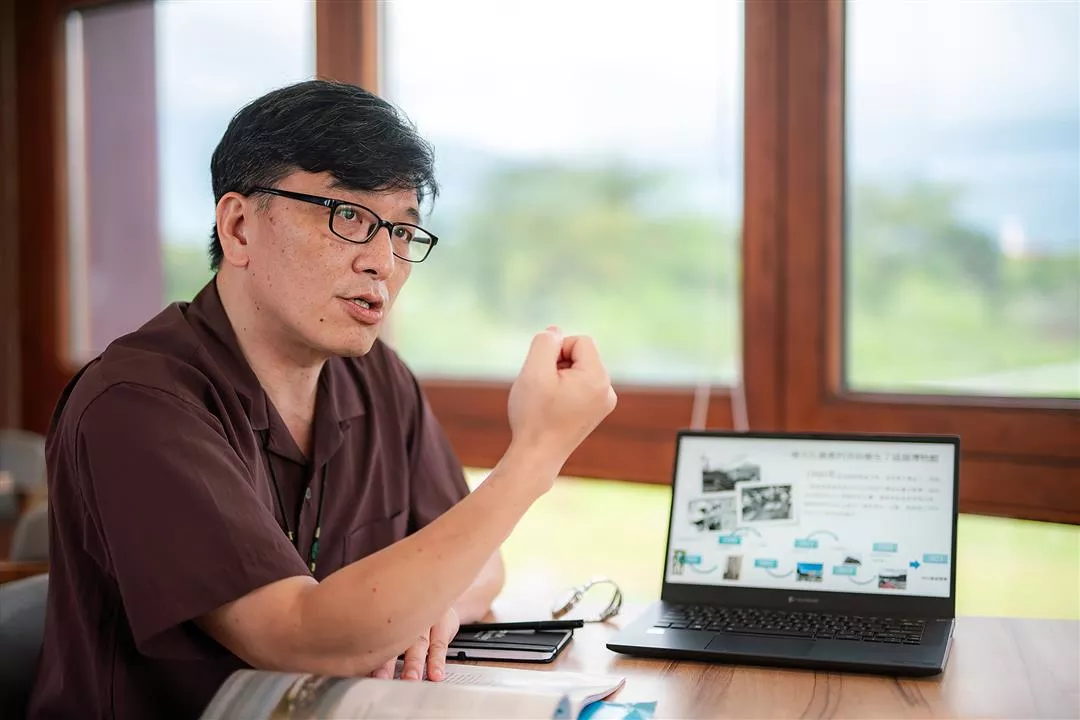
Fang Chun-wei explains that the NMP’s Austronesian Hall takes “Where Taiwan Meets the World” as its slogan to tell the story of how Taiwan has always been sharing the pulse of the world.
The spread of Taiwan jade
The excavation of jade artifacts has provided additional proof of Taiwan’s inextricable role in the Southeast-Asian network of cultural exchanges.
Although Taiwanese nephrite is found primarily in Hualien County’s Fengtian, jade artifacts have been unearthed not only at Beinan in Taitung but also at other archeological sites across Taiwan, testifying to their wide circulation on the island. Archaeologists have also discovered jades of Taiwanese origin in Southeast Asia. For example, lingling-o jade earrings with three pointed protrusions have been found at sites dating to 2,000–2,500 years ago in the southern Philippines, northern Borneo, Thailand, and central and southern Vietnam.
“The lingling-o jade earrings that have come to light in Southeast Asia have a slightly different design from those excavated at Jiuxianglan in Taitung. Archeologists postulate that a group of Taiwanese craftspeople may have brought the raw material to Southeast Asia, where they created artifacts that catered to local tastes—hence the subtle differences.” Scientific analysis shows that the jades in Southeast Asia contain chromite, a special feature that points to their origin in Taiwan. So this was another period that witnessed the far-reaching penetration of Taiwanese objects, corroborating the theory that the seas around us have never constituted an insurmountable impediment. Since time out of mind, the peoples of Taiwan have been engaging in cross-cultural exchange through sea crossings.
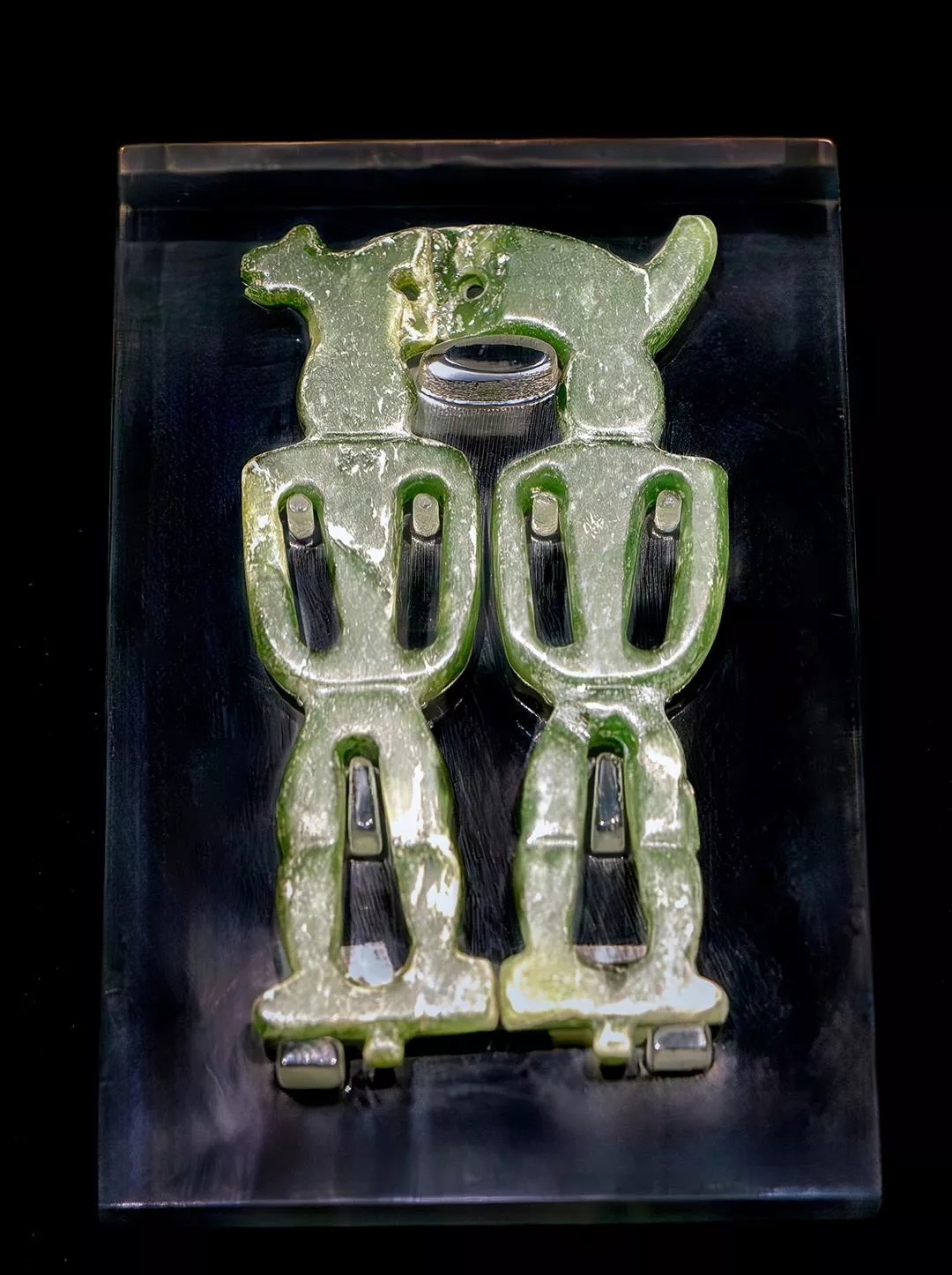
The Beinan Culture bequeathed to posterity an abundance of jade artifacts which testify to the consummate jade-working skills of these prehistoric people. This photo shows a zoo-anthropomorphic jade earring that has been designated as a national treasure.
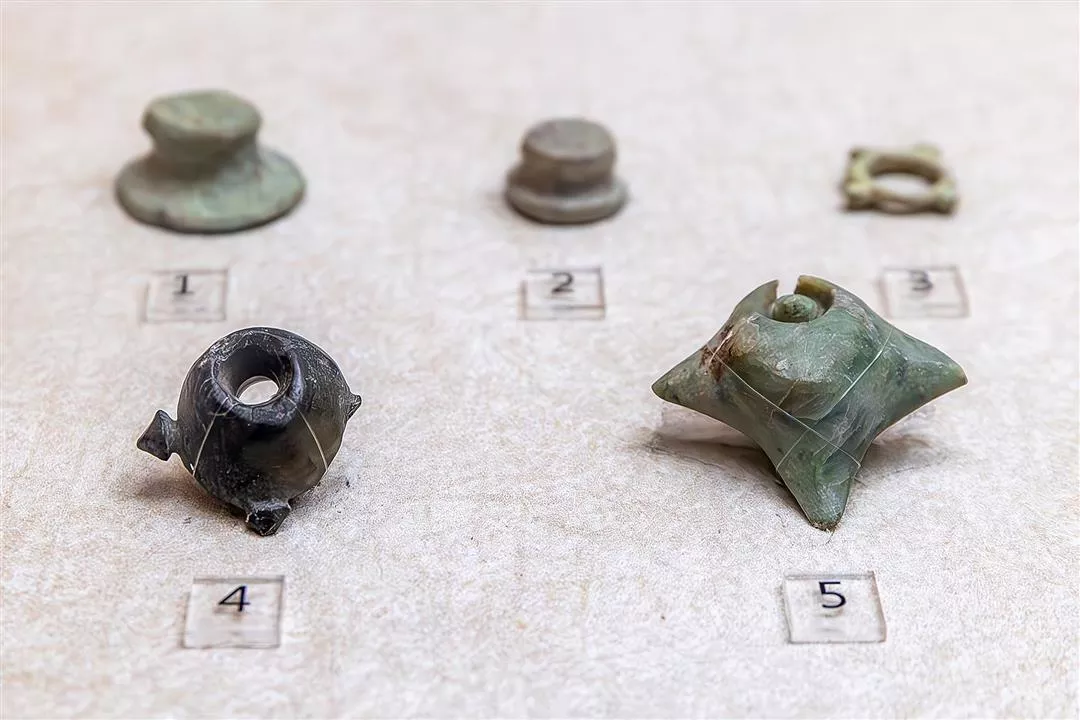
Lingling-o jade earrings (bottom row) have been unearthed at Taitung’s Jiuxianglan archeological site. They have also been discovered in the southern Philippines, northern Borneo, Thailand, and central and southern Vietnam, furnishing strong evidence of interaction between Taiwan and Southeast Asia.
International encounters
In another part of the NMP, we find Spanish silver coins displayed alongside a Tao silver helmet from Lanyu (Orchid Island). Why are these objects juxtaposed here? Lanyu does not produce silver, so how did the indigenous Tao people obtain the metal? Again, the answers lie in Taiwan’s unique geographical position.
When Western merchant ships began to arrive in Asia in the 16th century, they brought with them coins made of Mexican silver, with a view to trading these for goods in China and the Philippines. Merchants making a stop on Lanyu would replenish supplies by trading with the locals. Having acquired Spanish coins in this way, the Tao people melted them down to cast thin sheets of silver that they fashioned into important ritual objects. In doing so, they endowed the foreign metal with a distinctively local cultural meaning. “So this silver helmet actually tells the story of an island’s interaction with the world.”
Also on display at the NMP is an apparently unremarkable liquor pot whose dragon patterns speak of a connection with China. In the 17th century, Dutch colonists traveled from their headquarters in Tayouan (today’s Anping in Tainan) to look for gold in Eastern Taiwan. After landing on the Zhiben Wetlands in Taitung, the explorers presented Chinese liquor to the local Puyuma community of Katratripulr. The house where the liquor was stored subsequently caught fire, giving rise to a belief among the indigenous locals that wherever this liquor pot was placed, there would be a fire. However, rather than disposing of the pot, they continued to guard it for centuries.
When priests of the Bethlehem Mission Society arrived after World War II to carry out missionary work, the people of Katratripulr said: “The owners of this object have come. We’ve kept it for too long. It’s high time we returned it.” Reverend Jakob Hilber was the recipient of this “surprising repatriation,” and the pot eventually found its way into the collection of the NMP, where, despite its unassuming appearance, it “not only sheds light on Taitung’s history but also bears witness to the encounter between the local indigenous people and the Dutch.”
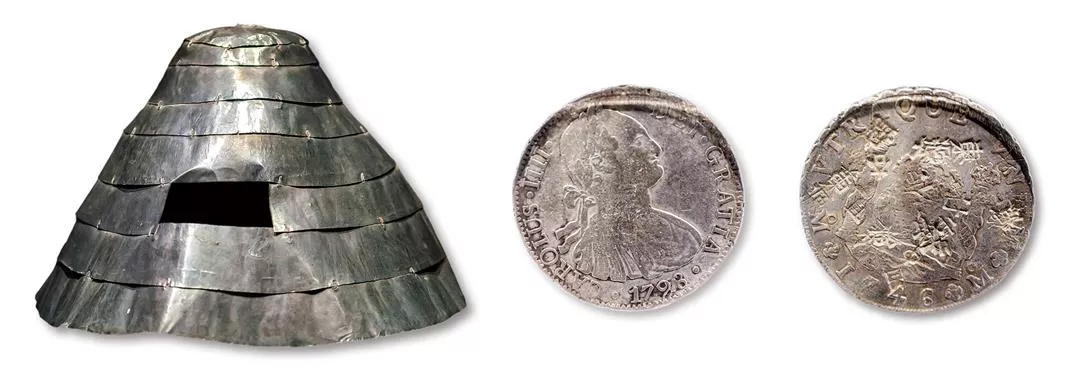
The indigenous Tao people on Lanyu (Orchid Island) created their iconic helmets by melting down coins made of Mexican silver brought there by Western merchants. These silver helmets tell us about the island’s interaction with the world.
One of the silver coins displayed at the NMP bears the date 1746, when it was minted, along with several Chinese characters.
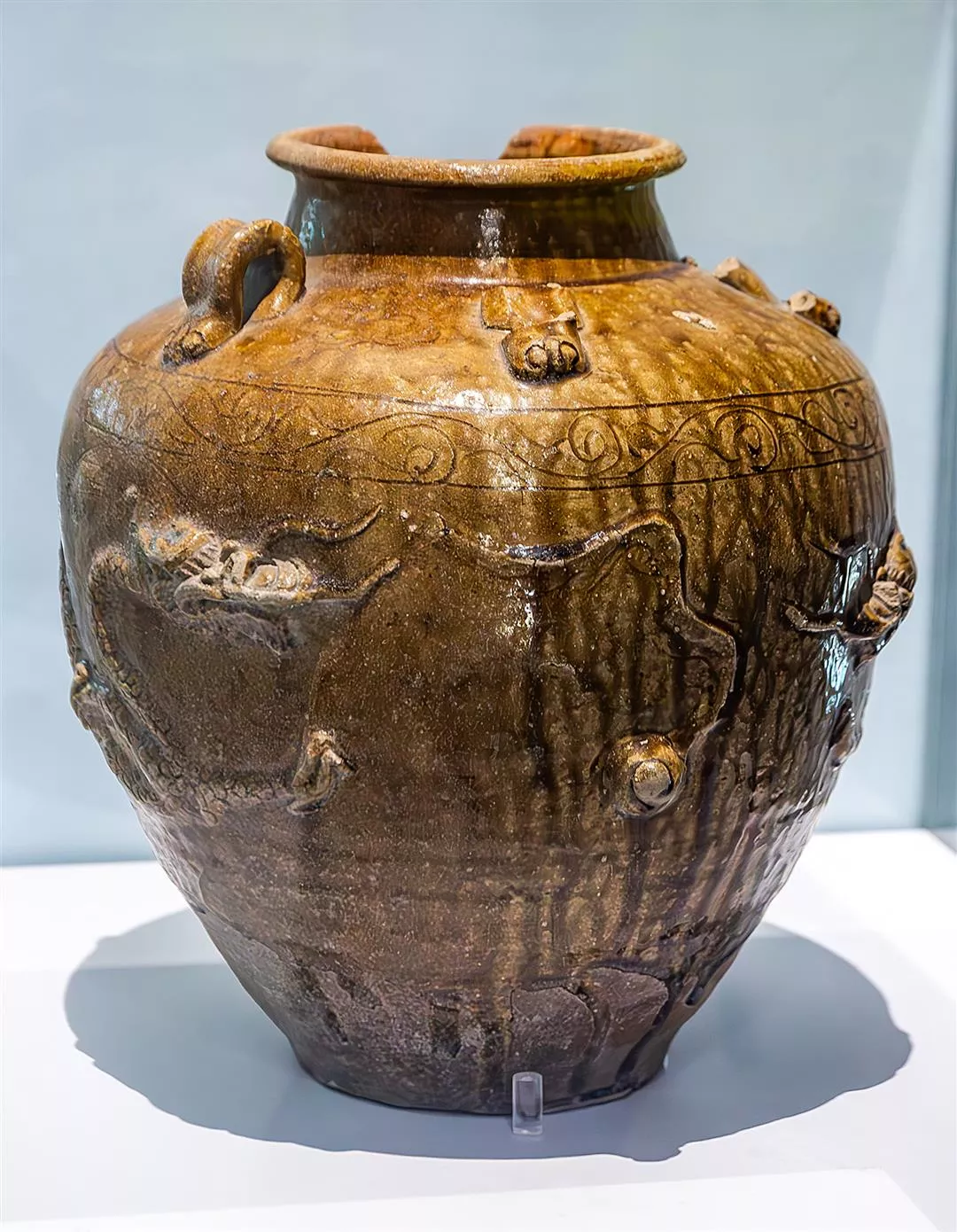
This Chinese liquor pot bears witness to an encounter between Taiwan’s indigenous peoples and the Dutch.
Out of Taiwan?
Did you know that the paper mulberry (Broussonetia papyrifera)—a common tree in Taiwan—offers a vital clue to the link between our islands and the Austronesian peoples? We visit Chung Kuo-fang, a research fellow at the Biodiversity Research Center, Academia Sinica, to find out how his study of the paper mulberry has crossed over from botany to anthropology.
In 2008 the NMP received from Japanese anthropologist Yoshichika Iwasa (1922–2014) his lifelong collection of objects from the Pacific islands. Many of these comprise bark cloth. Documentary evidence tells us that Austronesian bark cloth is usually made from the paper mulberry. However, the paper mulberries we find on the Pacific islands today are not natives; they seem to have been introduced through human migration.
Chung’s research was prompted by a suggestion from Chang Chi-shan, an associate researcher at the NMP whom he knew from his days at National Taiwan University: “Can we not use genetic testing to establish the provenance of the paper mulberry trees on the Pacific islands?”
Academics have not reached a consensus as to exactly how the Austronesian peoples spread across the Pacific and Indian oceans. Some have based their hypotheses on the transmission of agriculture and languages. For archeologists, the ability of the ancestors of the Austronesians to survive on remote islands had a lot to do with agriculture. They brought agricultural skills or plants with them when they relocated to these islands to begin a new life. Human migration is a crucial factor in the shifting geographical distribution of flora and fauna.
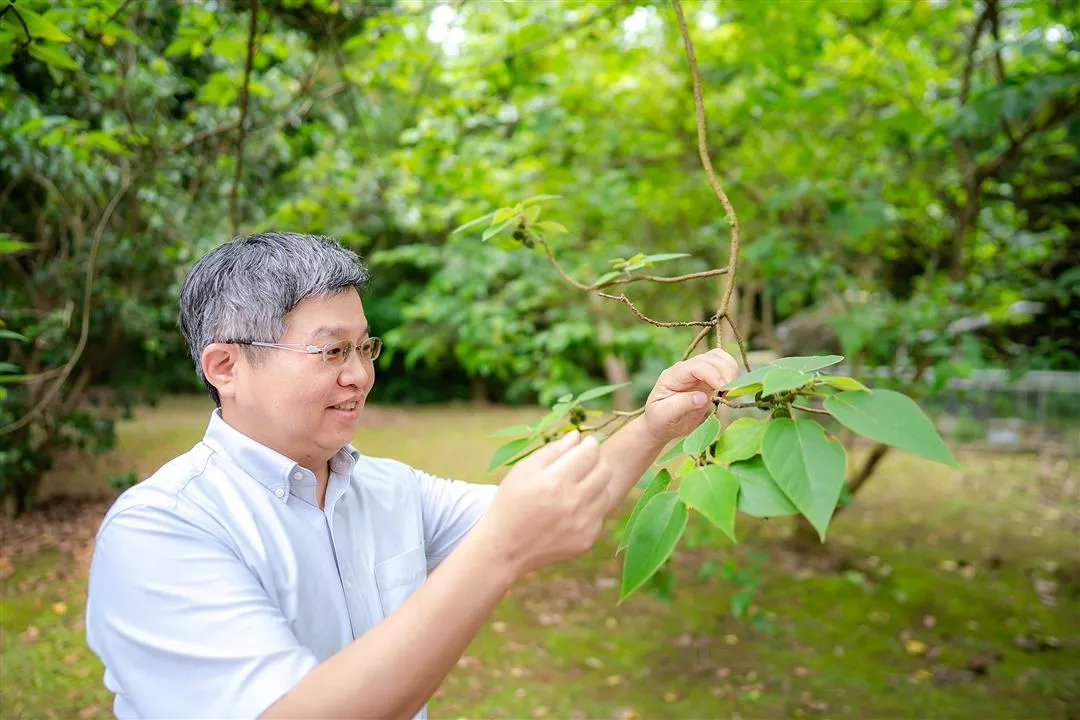
Chung Kuo-fang thinks that the paper mulberry has not received the attention it deserves. Vital to the traditional craft of papermaking, this is a plant that has changed human history.
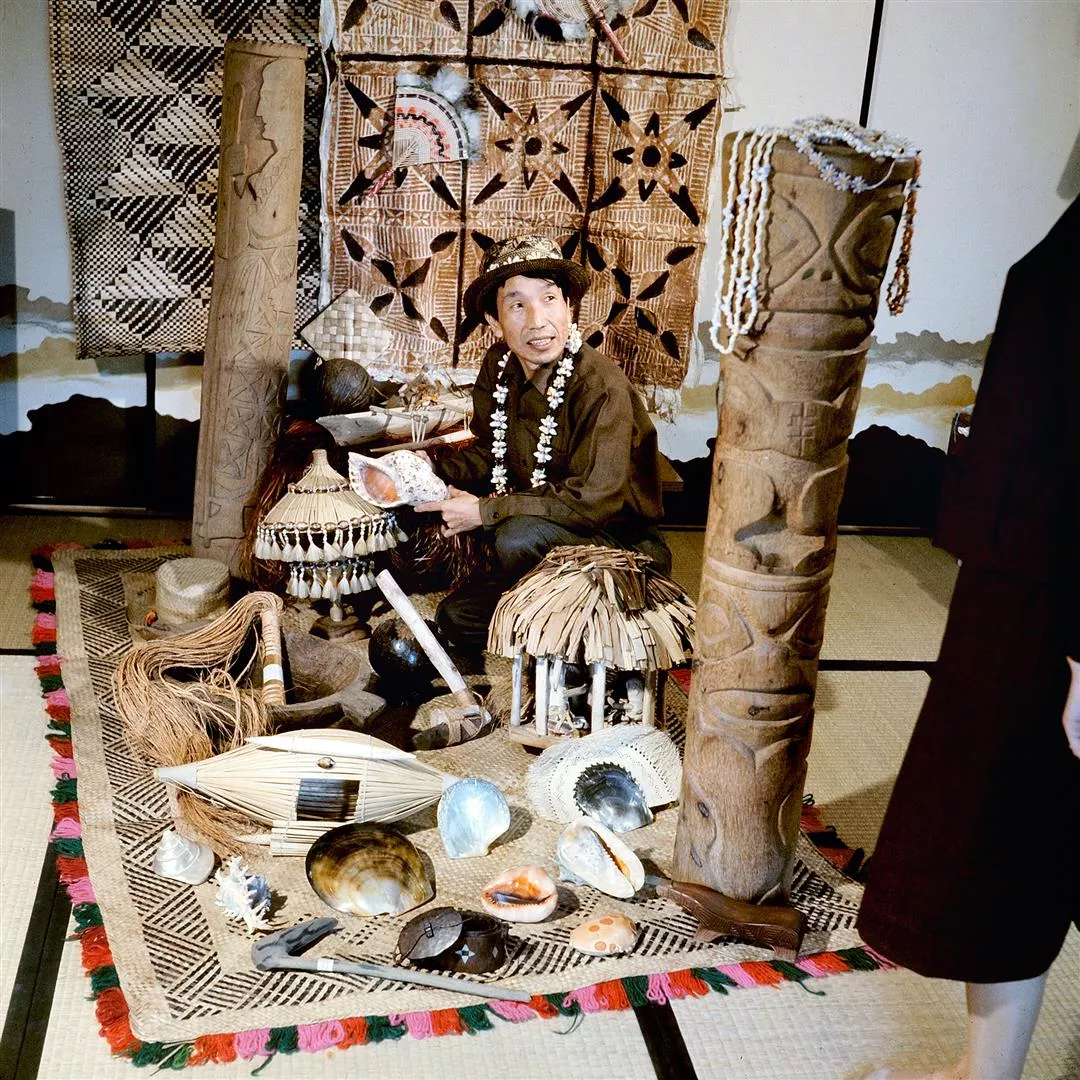
Japanese anthropologist Yoshichika Iwasa donated to the NMP his lifelong collection of objects from the Pacific islands. Many of these are made of bark cloth, inspiring Chung Kuo-fang and his team to investigate the relationship between the paper mulberry and the migrations of the Austronesian peoples. (courtesy of NMP)

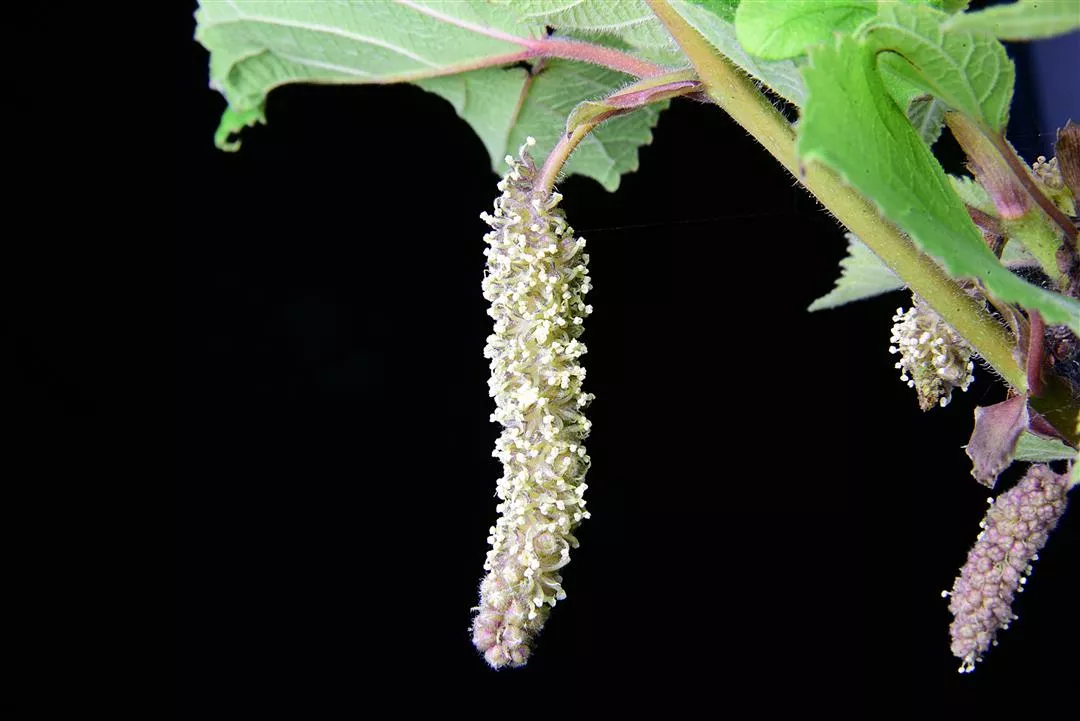
The paper mulberry is a dioecious tree species. Outside its flowering season, it’s hard to tell whether a particular plant is male or female.
(right, upper photo) The paper mulberry is known for the remarkable variability of its leaf shapes.
(lower photo) Almost all the paper mulberries on the Pacific islands are female. It’s almost impossible to find male flowers there. (courtesy of Chung Kuo-fang)
Secrets in the DNA
Chung set about collecting samples of paper mulberries from Taiwan and nearby countries to analyze their DNA sequences. He discovered that “across the entire Pacific region, the paper mulberries that are connected with the culture of making bark cloth basically share the same genetic structure. Beyond the Pacific islands, the cp-17 haplotype shared by these trees has been found only in Southern Taiwan.”
The paper mulberry is a dioecious species, with each plant being either male or female. Using the polymerase chain reaction (PCR) technique, Chung’s team has further discovered that the paper mulberry samples from the Pacific that carry the cp-17 haplotype are all female. There is no exception. “What does this mean? In Taiwan, the reproduction of paper mulberries depends on the coexistence of plants of both sexes. But the Pacific mulberries are all female. They can’t reproduce themselves. So they must have been introduced by people.” Genetic testing never lies. “These two pieces of evidence clearly show that the paper mulberries on the Pacific islands came from Taiwan, and that it was humans who brought them there.”
The paper mulberry has thus lent itself to the theory of Taiwan being “the earliest traceable homeland of the Austronesian peoples.” While the provenance of breadfruit trees (Artocarpus altilis), which have been introduced and reintroduced multiple times in many places due to their immense usefulness, is impossible to establish with any certainty, paper mulberries, which are of less practical use nowadays to the Pacific islanders, have a relatively uncomplex history. Facts like these all go some way toward supporting the “out of Taiwan” theory.
“I want to speak up for the paper mulberry. This plant has definitely not received the attention it deserves. Bark cloth can be seen as a kind of paper, and the craft of papermaking is intimately associated with paper mulberries. Without paper mulberries, there would be no paper. This is a plant that has absolutely changed human history,” says Chung, looking back on his long engagement with both the botany and the anthropology of the tree.
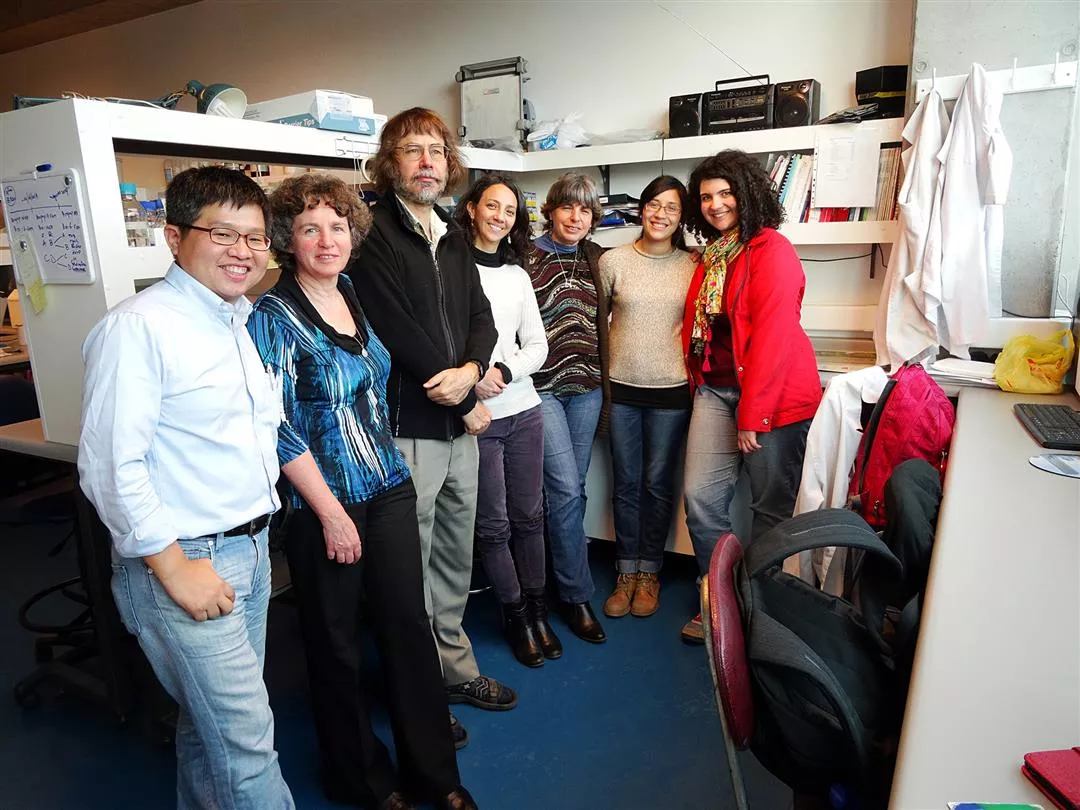
It is not easy to collect data about the paper mulberries on Pacific islands. Academics from Chile have also worked with Taiwanese researchers to uncover the secrets encoded in the tree’s DNA. (courtesy of Chung Kuo-fang)

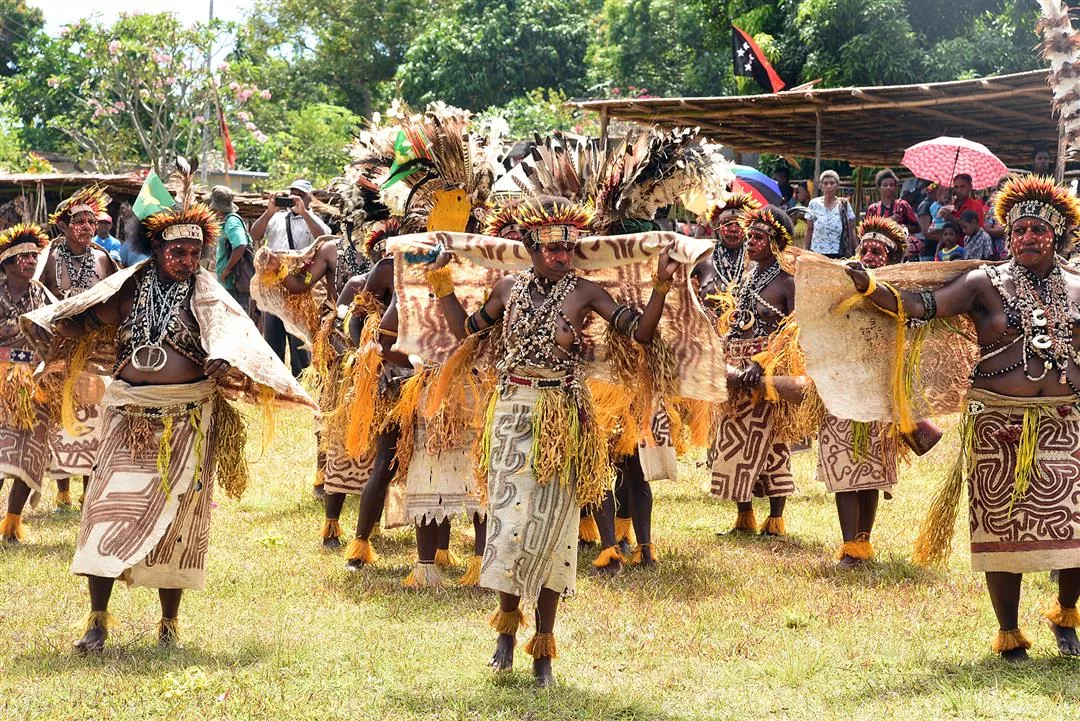
Made from the bark of the paper mulberry tree, the bark cloth of the Pacific islands offers an important clue to where the Austronesian peoples may have originated. These photos show a local in Papua New Guinea pounding tree bark to make cloth, and people dressed in bark cloth during a ritual.
(courtesy of Chung Kuo-fang)
Bridging past and present
Back at the NMP, Fang Chun-wei mentions that one vital function of museums is to forge connections between knowledge and the issues that people care about today, that is, to build a bridge between the present and the past. He quotes a Māori saying: “kia whakatōmuri te haere whakamua” (I walk backward into the future, with my eyes fixed on the past). This circular perspective on time suggests that the future is continuous with the past. By visiting museums, we get to appreciate the past events and experiences of different places, different times, and different people, allowing them to feed into what we are in the here and now.
Fang draws our attention to the C-shaped formation seen in the traditional dances of Taiwan’s indigenous Paiwan and Rukai peoples: “C is a circle with a gap, but that doesn’t betoken imperfection. Rather, it represents an opportunity, welcoming everyone to join in.” Fang adds that the Austronesians use two first-person-plural pronouns: kita includes the addressee, while kami does not. We wish to invite you to become part of “us”—kita—and explore Taiwan’s rich relationship with Austronesian cultures.
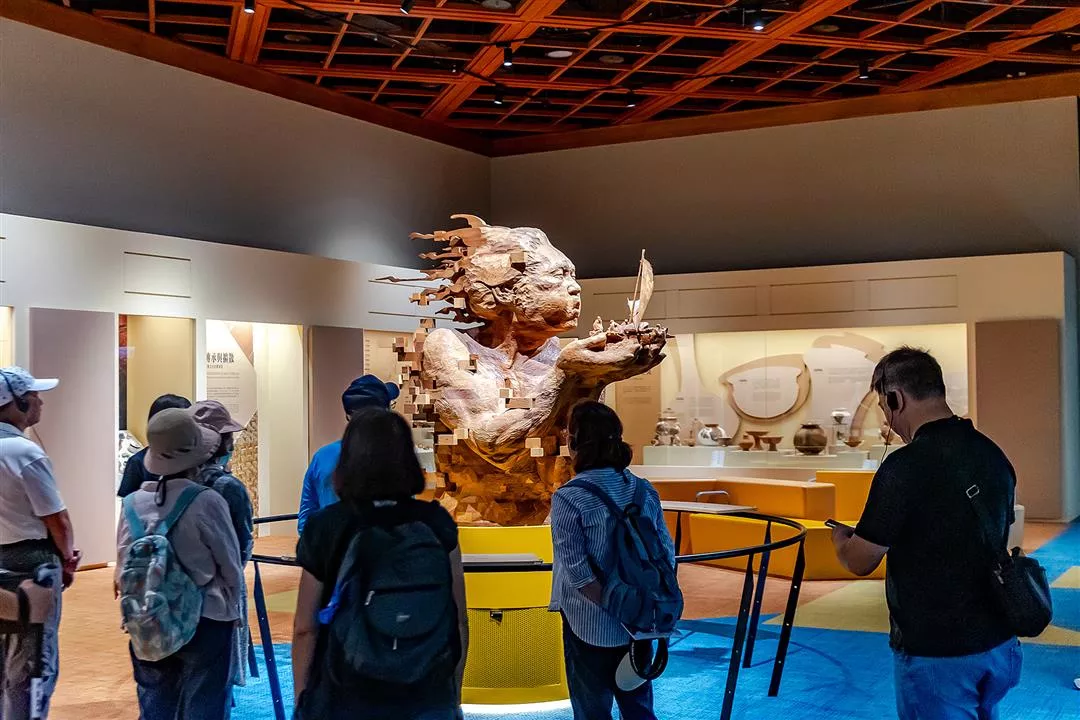
The NMP invited artist Han Hsu-tung to create Sea Wind, a wood sculpture that symbolizes the fearless spirit of seafaring Austronesians in search of new worlds.


@List.jpg?w=522&h=410&mode=crop&format=webp&quality=80)


@List.jpg?w=522&h=410&mode=crop&format=webp&quality=80)
@List.jpg?w=522&h=410&mode=crop&format=webp&quality=80)
